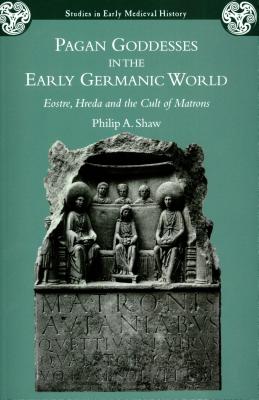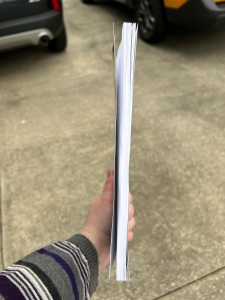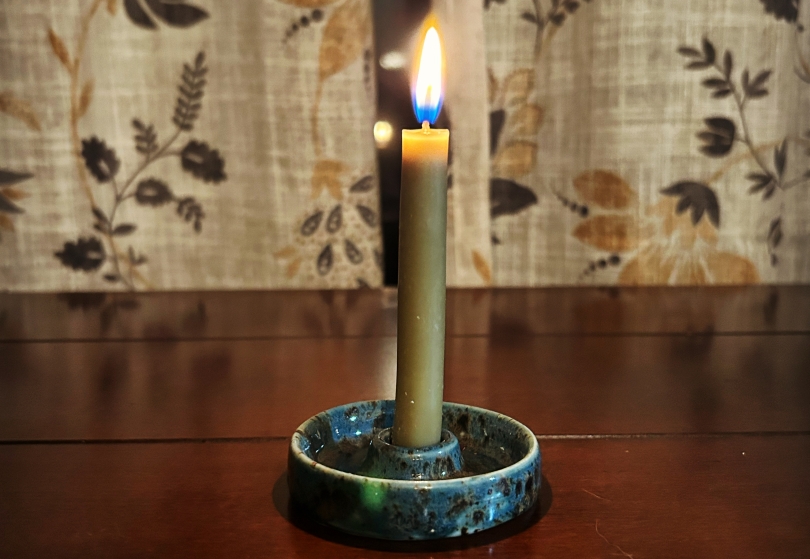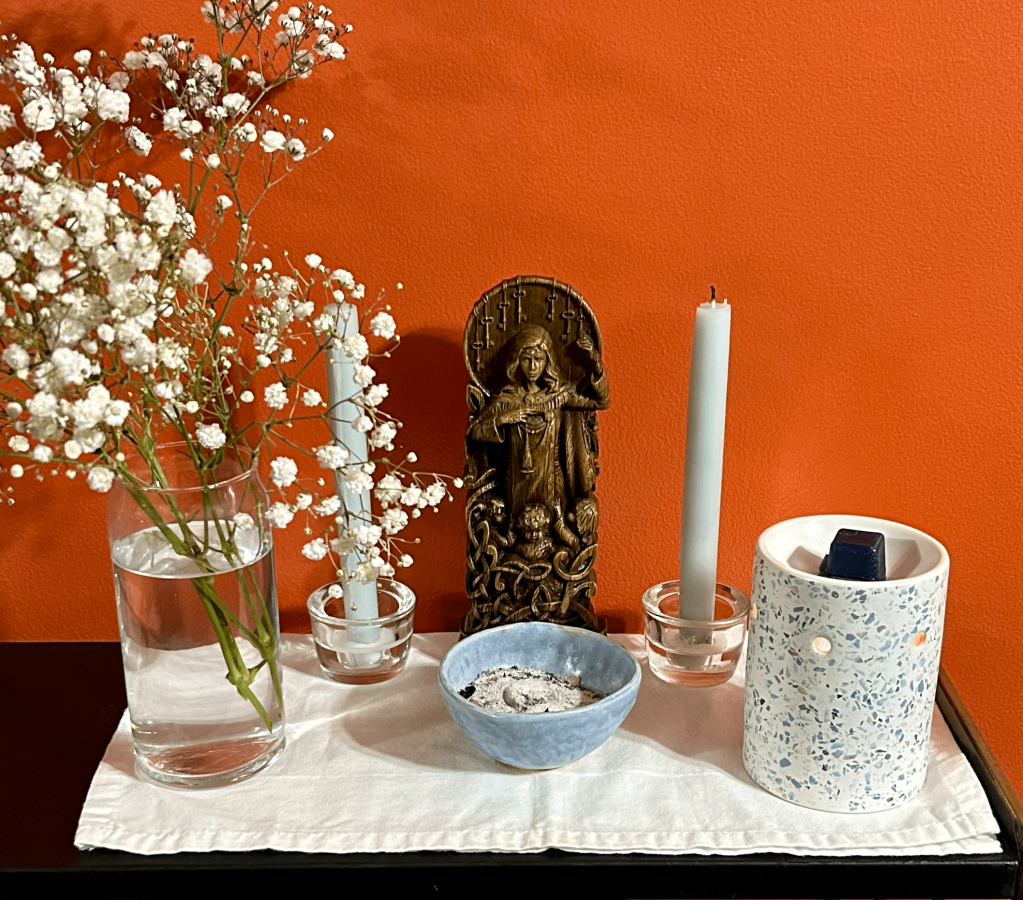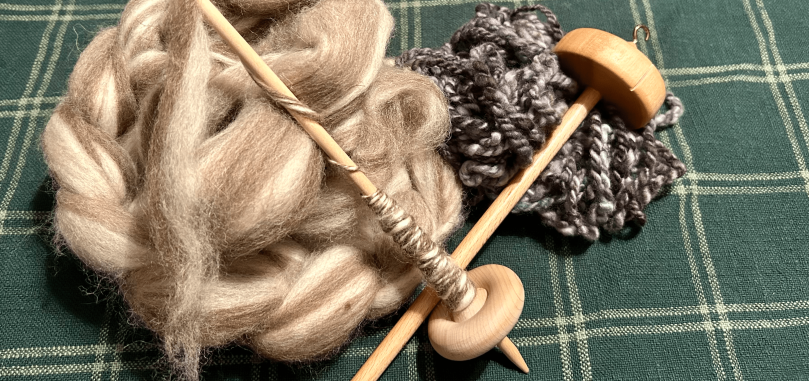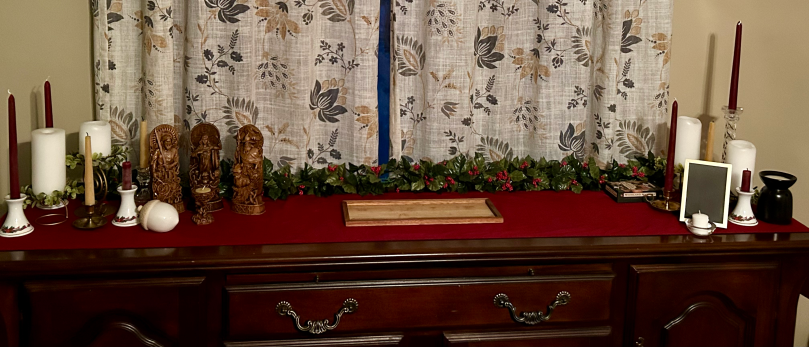The obvious answer to the title question is that Fyrnsideras can celebrate whatever holy days they want. I’m not your boss. Still, I’d like lay out as best I can the historical basis for an early February festival and why we should—or maybe shouldn’t—call it Ewemeolc.
What is Ewemeolc?
According to most sources, Ewemeolc is a celebration of the lambing seasons and the return of lactation among the animals that Anglo-Saxons and their neighbors relied on. It is the very first celebration of the coming season of abundance after a season of deprivation. To quote Alaric Albertsson, “This is what we celebrate each year at Ewemeolc—renewal and sustenance.”1
Many readers may be completely unfamiliar with this term, or think it sounds suspiciously similar to the name of another pagan holiday, and I can’t really blame them. Researching for this post was, in a word, frustrating. The word “Ewemeolc” does not appear to be widely attested, or even really discussed as far as I can tell. The Venerable Bede, our main source for Anglo-Saxon calendar information, certainly doesn’t mention it at all. Alaric Albertsson lists it as a holy tide in Travels Through Middle Earth quoted above, and every other reference I’ve found so far usually turns out to be citing him. Really, the name is nothing more than a semi-plausible Old English moniker for Imbolc, a celebration of Celtic origin.
Imbolc itself is also somewhat contested, with several theories as to the origin of its name. The most commonly accepted of these today is the idea that Imbolc or Imbolg means “in the belly” and refers to the pregnancy of sheep. Meanwhile, the construction of “Ewemeolc” is based on is a linguistic theory that it meant “Ewe’s milk” from the 10th century that has been discredited.2
With this information we can see that calling the holiday by the name Ewemeolc is a somewhat dubious proposition. It can be argued that there is no need to construct an old sounding name for a reconstruction of a festival that may—or may not—have existed. On the other hand, I have yet to hear anyone suggested a better name for Fyrnsideras to use. But even if we dispatch with the term Ewemeolc, there is no need to throw out the baby with the bathwater; we can still have our early spring festival.
Why Celebrate It?
So, if Ewemeolc isn’t an explicitly attested celebration, why should we consider including it in our sacred calendars?
- We do know that the Anglo-Saxons were doing something at that time of year since Bede specifically mentions they offered cakes during Solmōnaþ (roughly February in our calendar).3
- Imbolc for all we can debate its etymology is well established as a holiday among modern pagans. A tradition doesn’t have to be old to be valid.
Many Fyrnsideras live in families and communities of mixed traditions. For some of us, a group like the ADF4 provide the only in-person fellowship we can participate in regularly. Finding common ground in our holidays is often a necessity.
Constructing a Fyrnsidish Early Spring Festival
If we want to start with the evidence, we must begin with Bede and his cakes. The hearth cakes of the Anglo-Saxons were more akin to flatbread than what modern readers probably think of when they see “cake.”5 An appropriate modern substitute would probably be some form of oatcake or bannock. (I don’t think the gods would object if you wanted to make a modern cake with tasty buttercream frosting though.)
While digging in to modern Imbolc and Candlemas traditions, another possible modern alternative also caught my eye: pancakes. Personally, I kind of adore the idea of waking up on a chilly February morning and diving into a stack of thick, fluffy buttermilk pancakes. This is also the time of year when trees are tapped for syrup, so it seems very on trend for the season.
Bede tells us nothing about why the cakes were offered, of course. Nor does he give us any indication how those cakes may have differed from the everyday hearth cakes. My personal theory is that they were giving back part of their remaining winter stores to the Earth or some other agricultural deity to ensure the return of spring and the growing season. There was real sacrifice in giving up any part of your food supply this late in the winter.
And so, to go any further in our reconstruction we must look to other celebrations that take place in the early, early spring. Here we can find a few interesting threads to pull: fertility, cleansing, weather prediction, and the increasing light.
Fertility
The source of the sustenance and renewal that Albertsson eloquently discusses in Travels Through Middle Earth is specifically the milk brought about by the lambing seasons, a results of the ewes’ pregnancy. Likewise, this same theme is found in the Imbolc celebrations. It should be noted here that one of the products of this milk—fresh, salty soft cheese—was commonly eaten with hearth cakes. Hmm, did we just solve the mystery of Bede’s cakes?
Many Fyrnsideras do syncretize with Religio Romana, so we can also look to Lupercalia, the Roman festival in mid-February for evidence of a fertility theme. Although, I don’t in any way recommend recreating the Roman method of ensuring human fertility. Getting smacked on the hand with a thong of goat’s hide after it was sacrificed holds zero appeal for me.6
Plutarch also mentions that Lupercalia was said to have been celebrated by shepherds in ancient times (from his perspective). I don’t think this has any bearing on Imbolc celebrations, but I do think it’s a fun coincidence.
Cleansing
Another thread we find in common among other early spring festivals is a focus on purification or cleansing. Spring cleaning continues to be a traditional activity for this time of year into the modern day.
Candlemas, which is a Christian holiday, focuses on the purification of Mary following Jesus’s birth. It’s possible that could have also melded with other local traditions in areas where Candlemas is still celebrated to this day.
Looking back to the Romans again, we also find the February and Lupercalia have cleansing associations.
Weather Prediction
I’ve been calling this an early spring festival, but you could by all rights also say this is a late winter festival. In some places I believe it’s even referred to as midwinter.7 So, spring isn’t really quite here yet with the coming of the lambs. Figuring out just how much longer the winter weather is going to last was therefore top of mind for our agriculturally focused forbearers.
The methods of doing this weather divination vary across the world, and within our geographic areas of concern for our reconstruction purposes. Many involve hibernating animals, while others simply say that foul weather on Imbloc bodes well for an early spring8.
One practice did make its way across the pond to the United States, however. German settlers in Pennsylvania particularly brought with them a custom of looking to a hedgehog or a badger to see what the future weather might hold. Well, their new home didn’t quite have those same animals, and so the tradition of Groundhog’s Day on February 2nd was born.
Goddesses to Honor for Ewemeolc
Pagans of more Celtic leanings often venerate Brigid or St. Brigid during Imbolc. If you are a Fyrnsidere who has some syncretism with Celtic polytheism and venerates Brigid, this may be your go-to. I’m not, so I won’t really go into further detail on that here.
The Earth Mother
I think Mother Earth gives Woden a run for his money when it comes to who has the most names. In Fyrnsidu she is known as Eorthe or Folde. Nerthus and Hludana are names for her from other Germanic traditions. And of course, the Norse call her Jorð. You can find her in Greek traditions as Gaia, and to the Romans she was Terra. Modern druids in the ADF include an invocation to the Earth Mother in every single one of their public rituals.
I think it might be fair to say that Mother Earth or the personification of the Earth is the most widely worshiped entity in modern paganism. In my personal opinion, you could make a case for her being one of the most important deities, because it is through her that we receive many of the gods’ gifts, such as the nourishment for our bodies, the clothes that protect us, and the materials to build our shelters.
At this time of the year in the northern hemisphere, Eorthe is just waking up from her long sleep. Unseen beneath the snow and mud seeds are starting their slow progress towards germination. You could say they are safe in Eorthe’s belly, waiting to be born. Much like the lambs in the bellies of the ewes, no?
Frīg
This is probably a less obvious choice. However, if you venerate Frīg and want to lean into the spring cleaning and human fertility aspects of the season, inviting her to your celebrations just makes sense.
There are several ways to understand Frīg. Personally, I lean more into some of the associations from Norse mythology. I see her as concerned with maintaining order in the home, textile crafts, motherhood, child-bearing, and magic. She is a seer, a weaver of Wyrd and friþ. Beofeld from Wind in the Worldtree has laid out a reconstruction of Anglo-Saxon Frīg that leans more into the Roman interpretatio germanica of her as a Venus figure.9 Beauty, sex, and even war. I don’t actually think this conflicts with my view of her at all, since I see her and the Norse Freyja as the same figure (you can disagree with me, that’s okay).
Suggestions for Celebration
- Have a paganized Æcerbot10 (if you garden).
- Have a ritual to bless your gardening tools (if you garden).
- Have a fertility ritual for your local farmers’ market vendors’ gardens.
- Have a fertility ritual for yourself and your partner, if that’s something you’re interested in.
- Consider adding a representation of Eorthe to your altar space if you don’t already have one.
- Eat and offer goat cheese.
- Bake little offering cakes or rolls.
- Have pancakes.
- Do some weather divination, groundhog or badger optional.
- Do some spring cleaning
- Take a ritual bath or an ice bath
Further Reading
Eorthe
Frīg

